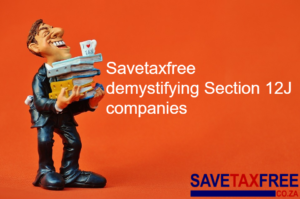The ETF Monthly Review: July 2019
Related Articles
The ETF Monthly Review
Welcome to this month’s ETF Review, a neat update of market news affecting ETFs, as well as a set of favourite funds chosen by the Intellidex team. We collaborate with Intellidex to bring you the latest insights on ETFs – probably the niftiest way to invest!
IN THIS ISSUE:
What happened in the markets in June?
- Resources lift local equities to cap the first half of the year with a remarkable performance
- Local funds fail to benefit from the international rally as the rand strengthens
- US-China trade conflict de-escalates and the US Federal Reserve signals it may cut interest rates
Our favourite ETFs
- Domestic equities: Satrix SA Quality ETF
- Foreign equities: Satrix MSCI World ETF and Satrix MSCI Emerging Markets
- Bonds and cash: NewFunds TRACI 3 Month (short term); Satrix ILBI ETF, Stanlib Global Bond ETF and Ashburton World Government Bond ETF (long term)
- Dividend/income funds: Stanlib SA Property ETF and Sygnia Itrix Global Property ETF
- Commodities: Standard Bank Africa Rhodium ETF
- Some ideas on satellite funds for both domestic and international equities
What’s happened in the markets?
Following May’s dismal returns, June’s curtain call saw resource stocks reminding us of their yester-year dominance of the JSE, pulling the all share index up 4.6% to its best monthly performance so far this year. The mining index rose 13.0%, helped by its sub-indices – the gold index which shot up 24.5% and platinum index climbing 14.8%. However, the price of gold itself was only up 4.6% while rhodium and palladium climbed 16.2% and 16.1%. Equally, international equity markets were impressive in June from the lows of May. The S&P500 index rose 6.9% with other international indices faring well, including the FTSE100 (+3.7%), Dax (+4.9%), CAC40 (6.4%), and the Nikkei 225 (+3.3%).
This strong performance in underlying resource-heavy assets propelled several local-asset ETFs. JSE heavyweights such as the Anglo-American group of companies saw double-digit stock price returns, with AngloGold climbing 30.5%. However, the strengthening of the rand in June against major currencies ensured JSE-listed international asset ETFs did not benefit much from the global equities rally. Consequently, the equally weighted portfolio of JSE-listed ETFs rose 3.85% while Intellidex’s portfolio was up 3.22%.
Local markets: June performance
The average return on local-equity ETFs was 5.58%. Three of the top five performing ETFs in June have the momentum theme: NewFunds Equity Momentum (+12.1%), NewFunds Volatility Managed High Growth Equity (+9.0%) and Satrix Momentum (+8.2%). The Satrix
Intellidex’s favourite ETFs
Each month the investment gurus at Intellidex scan the market to come up with a list of their favourites.
Phibion Makuwerere, CFA, explains:
We classify all ETFs into six broad categories:
- domestic equities
- international equities
- bonds and cash
- dividend or income-focused
- multi-asset
- commodities
Various empirical studies show that the bulk of equity returns stem from diversification among broad asset classes rather than from individual stock picking. As such, our grouping is done with a diversified portfolio in mind, ensuring appropriate exposure to different asset classes. First, we group the ETFs according to the three widely recognised asset classes – equities, bonds and cash. We further split equities into geographic groupings, then add a category for equity ETFs with an income theme.
Our picks should provide an investor with a relatively diversified portfolio, even if it was made up only of ETFs. However, asset allocation is not a one-size-fits-all concept. You need to make sure that weights of different asset classes in your portfolio meet your unique risk-and-return
objectives. Multi-asset ETFs, which are already diversified among asset classes, are analysed as a separate category.
As a rule of thumb, we like ETFs that follow a watertight investment philosophy. They should also be tax smart, which means they should qualify to be in a tax-free savings account. To avoid overconcentration, a good ETF should cap its exposure to a single sector and/or a single counter. While competition among providers is intensifying and ETF costs are coming down, we look at this metric closely and prefer ETFs with low total expense ratios (TERs). An overview of our favourite funds for each category follows.
The July favourites:
Domestic equity: Satrix SA Quality ETF
SA’s outlook remains weak and the political economy is in too much discord to inspire investor confidence. As such, sticking with the tried and tested stocks is important. The Satrix SA Quality ETF selects constituent companies using a set of quality metrics, including return on equity, liquidity and leverage. Such stocks tend to be resilient to economic shocks and volatility. The ETF rose 5.66% during June.
There are extensions to this core local equity exposure that can be added in a tactical sense as a satellite fund. The NewFunds Equity Momentum
Resi and the Ashburton Top 40 complete the top five. With resource stocks having maintained a positive momentum since the beginning of the year it’s no surprise the namesake ETFs performed well. Conversely, local government bond funds had a subdued month, with the NewFunds Govi fund losing 2.2% in June.
For SA the outlook remains poor and Intellidex’s forecast for SA’s economic growth this year is a meagre 0.5%. Besides the various corruption inquiries on the go, President Cyril Ramaphosa’s main achievement since taking the oval office has been the appointment of credible individuals to head key political and economic institutions. The recent reinstatement of governor Lesetja Kganyago and appointment of a strong interim PIC board is a continuation of this confidence-rebuilding exercise. It also emerged that the PIC wants to convert its debt in Eskom to equity as well as have a say over Eskom’s management, which is potentially positive for SA’s finances. But for economic growth to take off, we need meaningful reforms.
We believe companies highly exposed to global markets will continue to perform favourably.
International markets: June performance
JSE funds containing international equities and bonds, struggled due to strengthening of the rand with an average 0.2% negative return. However, the CoreShare
Other notable gains came from Sygnia/Itrix 4th Industrial Revolution, Cloud Atlas AMI Big50 ex-SA ETF and Stanlib S&P 500 Info Tech Index Feeder ETF. The worst-performing fund, the S&P Global Property ETF, lost 4.1%.
Arguably the US Federal Reserve has exerted the most influence on the global monetary system, which makes its actions the most watched by market participants. Anecdotally, the Federal Reserve actions have had the most influence on global equities since the 2008 financial crisis and the trend is set to continue. With the Federal Reserve looking to converge with other central banks by pursuing an accommodative monetary stance, global equities look set to remain on an upward trajectory despite breaking records and looking expensive historically. The toning down of US-China trade tensions is also feeding to the equities market frenzy, though risk of escalation is ever-present as long as US Donald President Trump remains in the mix.
fund is worth considering. It has performed ahead of other equity funds under both market extremes in the past two months. However, the sample period is too short to draw strong conclusions.
Developed markets Foreign equities: Satrix MSCI World ETF
As core international exposures, we like the Satrix MSCI World Equity Feeder ETF (down 0.37% in June) and the Ashburton Global 1200 Equity ETF (up 0.49%) due to their extensive geographic diversification. Satrix MSCI World beats Ashburton Global 1200 Equity ETF on costs.
Other more focused international equity themes include property and technology funds. These are worth considering for tactical or other investor-specific reasons.
Developing markets foreign equities: Satrix MSCI Emerging Markets ETF
We choose the Satrix MSCI Emerging Markets ETF (+2.97%) as our core portfolio for developing markets exposure. It invests in a wide range of emerging economies including some of the fastest-growing markets like China and India. The Cloud Atlas AMI Big50 (+2.09%), which focuses on African equities, can be used as a satellite fund to the core Satrix MSCI Emerging Markets fund.
Commodities
This was the best performing JSE-listed ETF asset class, delivering an average return of 7.0%. The Standard Bank Africa Rhodium ETF put in an exceptional performance with a gain of +18.4%. But platinum funds lost ground with the Absa NewPlat ETF falling 1.6%.
Final thoughts
Both the local and global outlook argues for a balanced portfolio which includes bonds, value and quality local and offshore stocks as well as alternatives with low correlations to risk assets.
Dividend or income-theme funds
If you rely on your investment income for day-to-day expenses, you may want to allocate a portion of your portfolio to ETFs that have a high distribution ratio.
Property funds tend to have the highest payout ratios. We maintain our choice of the Stanlib SA Property ETF (+6.77%). The Stanlib fund boasts the lowest TER in the segment. For foreign property funds, the Sygnia Itrix Global Property ETF (-4.05%) is the cheapest in this category.
Diversified funds
If you find the process of diversifying your portfolio daunting, two ETFs can do it for you. They combine equities and bonds to produce a diversified portfolio for two investor archetypes with differing risk appetites: Mapps Protect ETF (+3.28%) is more conservative, usually suitable for older savers. Mapps Growth ETF (+5.65%) suits investors with a longer-term horizon.
Bond and cash funds
Bonds should find their way into a well-diversified portfolio due to their risk-diversification attributes. If you are investing for a very short period, usually less than a year, then the NewFunds TRACI 3 Month (0.59%) is a natural choice because it is least sensitive to sudden adverse interest rate movements. You can also park your funds in a money market fund if you’ve a lump sum that you wish to put down as a deposit for big-ticket item purchases like a house or car while you shop around.
It’s a better option than putting money in a current account that does not earn real interest. For a longer investment horizon, protecting your investment against inflation is paramount. We maintain our choice of the Satrix ILBI ETF (+0.20%), which has the lowest expense ratio in this category. Furthermore, nominal bonds add a unique risk-return dimension that differs from inflation-linked bonds and improves overall portfolio performance.
As with equities, investors also need to diversify their bond portfolios internationally. Our choice is the Stanlib Global Bond ETF (-1.55%) which tracks investment-grade sovereign bonds mostly issued by the US, UK, Japan and selected European countries. The Stanlib Global Bond ETF has the lowest TER in this category.
Commodities: Standard Bank Africa Rhodium ETF
Adding a commodity ETF to your portfolio improves diversification because commodities march to the beat of their own drum when compared with broad markets, which makes them an excellent portfolio diversifier. Traditionally, gold is the preferred addition to an investor’s portfolio because over longer periods it has shown to be the least correlated with other assets. However, our preference based on our medium-term outlook is between rhodium and palladium.
The new vehicle emission laws in Europe and China are driving demand for both commodities and this is expected to continue in the foreseeable future. We are slightly more inclined towards rhodium because it is scarcer, with lower extraction rates from PGM ore. The primary production of rhodium is somewhat inelastic and is expected to decline moderately over the medium term.
Important note: This ETF does not qualify for a tax-free savings account.






